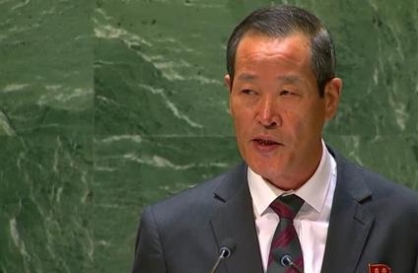
Speaking at this summer’s European Central Bank Forum in Portugal, Gita Gopinath, the International Monetary Fund’s first deputy managing director, set out what she described as “Three Uncomfortable Truths for Monetary Policy.” But it was the speech itself that often made for awkward listening.
Gopinath’s first truth was that “inflation is taking too long to get back to target” and that “sustained high inflation makes bringing down inflation more difficult.”
You don’t say? What would we do without the IMF to supply us with such bold insights?
But buried among the platitudes was one observation which startled the bankers in the audience. “It would be helpful,” Gopinath argued, “to strengthen capital buffers even further. Banks should save some of their current high profits as capital.” Helpful to whom, one might ask?
Higher capital achieved in that way would result in more expensive, and less available, credit. And, from a financial stability perspective, Gopinath argues elsewhere that “the capital and liquidity ratios of the banking system as a whole are solid.” That view was confirmed this week by the Bank of England, which concluded that “banks have enough capital to survive a severe stress.”
So, Gopinath is arguing for the use of macroprudential policy as a substitute for, or perhaps a complement to, raising interest rates. But that was not the original argument for additional capital buffers, which were sold as a means of addressing systemic risks arising from interconnectedness and vulnerabilities within the financial system.
As Michael Barr, the Federal Reserve’s vice chair for supervision, recently explained, “the goal of the countercyclical capital buffer is to build buffers in good times to help prepare for bad times.” The consequences of using macroprudential policy to advance monetary policy goals requires far more careful assessment than Gopinath provided.
Gopinath’s instinct to target the level of bank capital recalls a conference exchange: “The answer is more capital. But what was the question?” A paper from the Center for Economic Policy Research in 2017, asks it. After reviewing a long data series of bank capital ratios, and mapping them against episodes of financial instability, the authors conclude that “the capital ratio provides virtually no information about the probability of a systemic financial crisis,” but that “macroprudential policy can lower the costs of a financial crisis, even if it cannot prevent it.” So, if we focus on financial stability, it is reasonable to ask whether recent troubles in the US and Swiss banking system amount to a case for more capital across the board.
It is not at all clear that they do. Both Silicon Valley Bank and Credit Suisse operated questionable business models -- highly concentrated exposures in the case of SVB, and a risk-seeking investment-banking model in the case of CS.
The Federal Reserve’s own review of its supervision of SVB described the failure as “a textbook case of mismanagement by the bank” and did not identify capital weakness as a contributing factor. It did argue the bank needed more long-term debt that could be bailed in, a gap which would be filled by Barr’s latest proposals.
It was clearly a mistake to remove those requirements from midsize US banks in 2018. There has not (yet) been a comparable review of why CS needed to be rescued, but at the end of 2022 the Swiss National Bank considered its capital position satisfactory -- and even above-average by international comparisons. That apparently strong capital backing did not help when investors and depositors lost confidence last winter.
Indeed, the failures of both banks bring to mind Walter Bagehot’s observation in Lombard Street: “A well-run bank needs no capital: No amount of capital will rescue a badly run bank.” The obvious riposte is to ask how we know when a bank is badly run.
Who decides when a bank’s business model, and management, are unsustainable? Investors had marked down the value of CS shares for some years, but not sufficiently to bring matters to a head. Can supervisors make such judgments?
This is a version of the perennial rules-versus-discretion debate in central banking. Supervisors’ current approach -- to attach a numerical value, expressed in terms of Common Equity Tier 1 capital, as a proxy for sustainability -- did not work well in the two recent cases. So, should supervisors be able, instead, to reach a qualitative judgment and put a bank into some form of resolution procedure if they conclude that, even though an institution is meeting its capital minima, it is not viable in the longer term?
Shareholders would certainly take a critical view if supervisors jumped the gun with such a judgment. Class-action suits, or possibly a judicial review, would follow as night follows day.
The hurdle for reaching such a judgment must be high. But the alternative -- ever higher capital, with serious consequences for credit availability and highly uncertain benefits for financial stability -- looks costly and unsatisfactory. Perhaps the beautiful minds of the Basel Committee could focus some of their attention on the question of how to operate a robust regime of constrained supervisory discretion, rather than piling ever more Pelion on the Ossa of regulatory capital.
Howard Davies
Howard Davies, a former deputy governor of the Bank of England, is chairman of NatWest Group. -- Ed.
(Project Syndicate)
-
Articles by Korea Herald




![[Weekender] Korean psyche untangled: Musok](http://res.heraldm.com/phpwas/restmb_idxmake.php?idx=644&simg=/content/image/2024/05/02/20240502050841_0.jpg&u=)

![[Eye Interview] 'If you live to 100, you might as well be happy,' says 88-year-old bestselling essayist](http://res.heraldm.com/phpwas/restmb_idxmake.php?idx=644&simg=/content/image/2024/05/03/20240503050674_0.jpg&u=)











![[Herald Interview] Director of 'Goodbye Earth' aimed to ask how we would face apocalypse](http://res.heraldm.com/phpwas/restmb_idxmake.php?idx=652&simg=/content/image/2024/05/03/20240503050732_0.jpg&u=)
